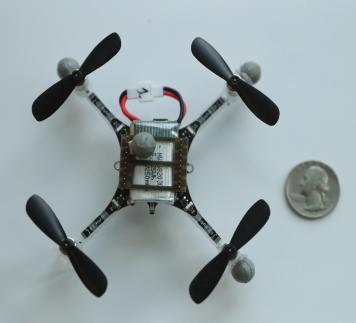Verification of Emergent Behavior
Experimental verification of swarm behaviors is challenging, one way to address this is to use mixed reality. Existing theoretical work proposes robot formations emerge from time delay between inter robot communication. Our results using the Crazyflie platform demonstrate the existence of theoretically predicted emergent behaviors
Research Overview:
Performing experimental verification and validation (V&V) for robot swarms with large numbers of agents is challenging. As such, our theoretical insights far exceed our experimental results. The goal of this program was to bridge the scalability gap using new experimental tools, mainly: Mixed Reality. This method combines simulated and real robots to help achieve large numbers without needing all of the physical platforms.
Mixed reality allows for early testing and evaluation of theoretical models, which improves field deployment readiness, and serves as a step in the experimental pipeline. In this work, we were specifically interested in the emergence of different collective behaviors which arise due to communication or sensor data processing time delay.
Two experimental platforms were studied including the Pelican Unmanned Ariel Vehicle (UAV) and the Crazyflie micro Ariel Vehicle.


Experimental results focused on demonstrating the ring emergent behavior, as well as demonstrating switching from one behavior to another, (Ring to Rotating behavior). For more details please consult the citations below.
This work was done in collaboration with Dr. Jason Hindes, Dr. Ira B. Schwartz, Dr. Ioana Triandof, and Donald Sofge at the US Naval Research Laboratory.
(Edwards et al., 2020; Hindes et al., 2020; Hindes et al., 2020; Schwartz et al., 2020)